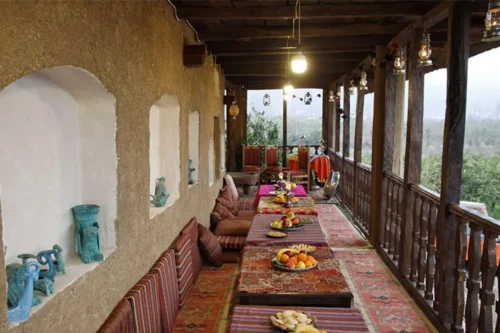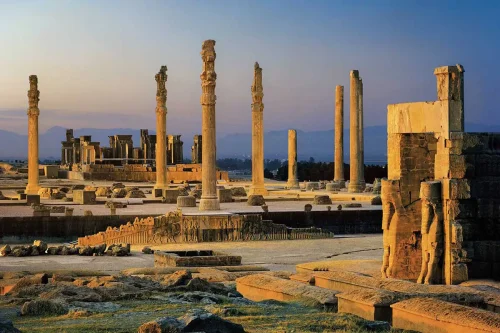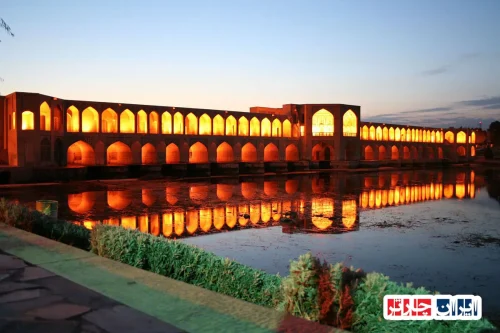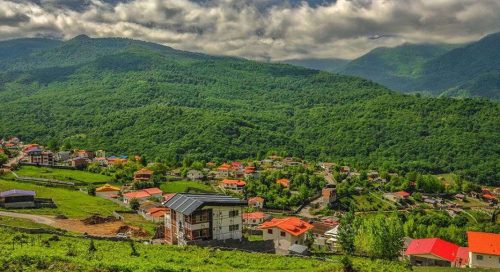News Source : https://www.mehrnews.com/news/6296050/%D8%A7%D8%B2-%D8%B2%D9%86%DA%AF-%D8%AE%D8%B7%D8%B1-%D8%A8%D8%B1%D8%A7%DB%8C-%DB%B3%DB%B0%DB%B0-%D9%85%D9%82%D8%B5%D8%AF-%DA%AF%D8%B1%D8%AF%D8%B4%DA%AF%D8%B1%DB%8C-%D8%AA%D8%A7-%D8%AF%D9%84%D8%A7%DB%8C%D9%84-%DB%8C%DA%A9-%D8%A7%D9%82%D8%AF%D8%A7%D9%85-%D9%81%D9%88%D8%B1%DB%8C-%D8%A8%D8%B1%D8%A7%DB%8C
From Alarm Bells for 300 Tourism Destinations to the Reasons for Urgent Action in Iran
The Secretary of the National Committee for Green Tourism has outlined the “Urgent Tourism Action” plan, emphasizing the need for fundamental and urgent changes in Iran’s tourism processes. Given the severe issues in the country’s energy and water sectors, Iran faces multiple challenges in the tourism industry that require swift and effective solutions. Last summer, electricity consumption records were broken over 35 times, and meteorological data indicate warming beyond expectations in the country. If this trend continues, there will be serious imbalances in electricity production in the future, which could have detrimental effects on the country’s tourism businesses.
To counter these problems, strongly advocates the necessity of planning and swiftly implementing emergency measures. The urgent tourism action plan for Iran aims to improve sustainable tourism indicators and reduce environmental and social harm.
Additionally, underscores the importance of precise planning and resource management in the tourism industry. Without these actions, unsustainable mass tourism could lead to the degradation of natural and cultural resources, ultimately endangering the sustainability of this industry.
Finally, stresses that collaboration among all related institutions and the support of senior management are key to the successful implementation of this plan, tackling current crises and ensuring a bright future for Iran’s tourism. By making necessary changes and utilizing short pathways without bureaucracy, we can move towards improving sustainable tourism indicators and preserving the country’s natural resources.
Immediate Actions to Preserve 300 Tourist Destinations in Iran
Comprehensive immediate action plans for Iran’s tourism aim to protect and enhance 300 tourist destinations across the country. Focused on managing natural and cultural resources, these actions strive to ensure the sustainability of the tourism industry. From the alarm for these 300 tourist destinations to the reasons for an urgent action for Iran, the necessity for structural changes in tourism practices is evident.
From Alarm to Practical Solutions for Iran’s Tourism Industry
Faced with serious energy and water challenges, Iran feels a greater urgency to implement the immediate tourism action plan. These plans offer quick and practical solutions that turn the alarm for the 300 tourist destinations and the reasons for urgent action into an opportunity for improvement and development. Collaboration among various organizations and support from senior managers is key to the success of these plans.
Challenges and Essential Solutions for Sustainable Tourism in Iran
The challenges faced by Iran’s tourism industry require swift and effective solutions. From the alarm for the 300 tourist destinations to the reasons for urgent action for Iran, there is an emphasis on developing sustainable tourism and reducing environmental and social impacts. These suggested measures are part of the immediate tourism action plan to preserve the country’s natural and cultural resources.
The Impact of Energy Crises on 300 Tourist Destinations in Iran
Recent energy crises in Iran have had devastating effects on the country’s tourism industry. From the alarm for the 300 tourist destinations to the reasons for urgent action for Iran, there is a clear need for precise planning and resource management to prevent serious problems in electricity generation and energy supply for tourist destinations.
Emergency Measures for Resource Management in Iran’s Tourism Industry
Optimal resource management is of paramount importance in Iran’s tourism industry. The immediate tourism action plan emphasizes emergency measures to guide current trends towards improving sustainable tourism indicators. From the alarm for the 300 tourist destinations to the reasons for urgent action for Iran, the necessity to change procedures and use short, non-bureaucratic paths is evident.
Rapid Planning to Preserve and Develop Tourist Destinations in Iran
Rapid and effective planning is key to preserving and developing 300 tourist destinations in Iran. From the alarm for the 300 tourist destinations to the reasons for urgent action for Iran, implementing emergency programs quickly and utilizing the available capacities of the tourism department are necessary. These programs aim to improve sustainable tourism indicators and reduce environmental and social impacts.
The Importance of Cooperation Among Relevant Bodies in Iran’s Immediate Tourism Action
Cooperation among all bodies related to the tourism industry, including ministries, organizations, and the private sector, is essential for the successful implementation of Iran’s immediate tourism action plan. From the alarm for the 300 tourist destinations to the reasons for urgent action for Iran, emphasis on executive support and coordination between organizations is necessary for improving sustainable tourism indicators.
Efforts to Reduce Environmental and Social Impacts in Iran’s Tourism
The immediate tourism action plan in Iran aims to reduce environmental and social harm by transforming mass unsustainable tourism into sustainable tourism. From the alarm for the 300 tourist destinations to the reasons for urgent action for Iran, the importance of resource management and raising public awareness to preserve the country’s natural and cultural resources is evident.
Ways to Improve Sustainable Tourism Indicators in Iran with Immediate Actions
Improving sustainable tourism indicators in Iran requires immediate and targeted actions. From the alarm for 300 tourist destinations to the reasons for urgent action for Iran, the immediate tourism action plan focuses on precise planning, resource management, and reducing environmental and social impacts, moving towards improving sustainable tourism indicators. These actions become feasible with the support of various organizations and the use of knowledge and new technologies.
FAQ
- What is the Immediate Tourism Action Plan?
- The Immediate Tourism Action Plan is a strategic plan designed to change current tourism practices and improve sustainability indicators in Iran’s tourism industry.
- Why is the Immediate Tourism Action Plan necessary?
- Due to serious issues in the country’s energy and water sectors, increasing electricity consumption and excessive heating, and the unsustainability of tourism flow, this plan is essential.
- What role does Mohammad Jahanshahi play in this plan?
- Mohammad Jahanshahi is the Secretary of the National Nature Tourism and Green Tourism Committee, who developed the Immediate Tourism Action Plan for Iran for the first time and communicated it to the tourist offices of the tourism deputy.
- What are the main problems faced by Iran’s tourism industry?
- The main problems include serious issues in energy and water sectors, instability in electricity consumption, excessive heating, and unsustainable mass tourism.
- How does the Immediate Tourism Action Plan intend to solve the problems?
- The plan tackles emergencies by formulating quick solutions, avoiding bureaucratic hurdles, and efficiently improving sustainable tourism indicators.
- What features does the Immediate Tourism Action Plan have?
- This plan is short-term and tactical, integrated into daily activities, pursuing the shortest paths far from unnecessary bureaucracy.
- What is the ratio of mass tourism to sustainable tourism?
- At least 90% of travel activities in the country occur outside minimal standard frameworks without tourism planning principles.
- What is green tourism?
- Green tourism refers to environmentally conscious tourism, aiming to minimize negative impacts on natural, cultural, and social environments.
- How does the Immediate Tourism Action Plan avoid bureaucracy?
- The plan is designed to be swiftly implemented without significant financial resources, special permits, or complex bureaucratic processes.
- What do field evaluations indicate?
- Field evaluations in more than 300 tourist destinations indicate manifestations of instabilities and the need to raise public awareness and promote responsible behaviors.
- What impact does land use change have on tourism?
- Land use change, land grabbing, destruction of architectural structures, and behavioral pattern changes decrease sustainable indexes and increase tourism instability.
- Why will the Immediate Tourism Action Plan not work without implementers’ belief?
- Without the support and commitment of implementers, the plan will not be executed, and current trends will continue with high costs and low efficiency.
- What is the sustainable mass tourism model?
- The sustainable mass tourism model seeks to maintain mass tourism by strengthening sustainability indicators from within and utilizing existing capacities.
- What is the role of human capital in sustainable tourism development?
- Efficient human capital, through awareness and basic readiness, can guide various tourism paths towards sustainability.
- What are the future challenges of resource management in the tourism industry?
- With increasing energy and water issues, resource management and planning in the tourism industry will face more challenges, requiring immediate and effective solutions.
- How does the Immediate Tourism Action Plan manage financial resources?
- The Immediate Tourism Action Plan is executed quickly without needing substantial financial resources, utilizing existing assets and preventing unnecessary costs.
- What is the impact of excessive heating?
- Excessive heating leads to increased power consumption and instability in energy production, potentially causing serious issues for tourism businesses.
- How does the Immediate Tourism Action Plan operate without bureaucracy?
- The plan is designed to be executed within daily activities and using the shortest paths, without the need for complex bureaucratic processes.
- How can unsustainable mass tourism be converted to sustainable tourism?
- By establishing systematic monitoring and control processes, managed planning, and employing management models, unsustainable mass tourism can be directed towards sustainable tourism.









